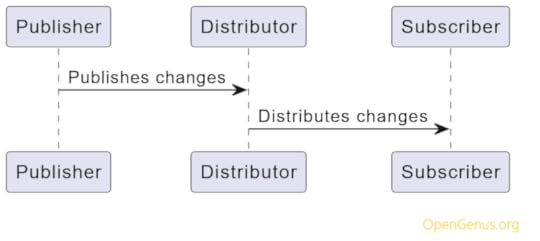Aditya Chatterjee's Blog, page 6
May 27, 2024
Projection Pursuit (PP)
Table of Contents:
Introduction to Projection PursuitPurposeProjection IndexMethodImplementation in pythonAdvantageslimitationsApplication in real worldIntroduction to Projection PursuitProjection Pursuit is a statistical technique to find the most "interesting" possible projections of multidimensional data. Generally, projections with more deviation from normal distribution are preferred and considered as more interesting.
William Henry Kruskal was the first who proposed the concept ...
May 18, 2024
Aligning Flexbox

Flexbox is used to align items vertically and horizontally in a container of a webpage. It is a one-dimensional layout model. Meaning that it only deal with layout in one dimension at a time, either it can align vertically (column) or horizontally (row).
Parent, Child RelationshipIn Flexbox, the aligning part is done in parent element also called as flex-container. The child elements are present inside the flex-container.
The parent element should contain the display: flex prop...
May 8, 2024
Understanding Transactional Replication in SQL Server
Transactional replication is a popular method for keeping multiple SQL Server instances synchronized by capturing changes from one server (publisher) and applying them to others (subscribers). We will explore its key aspects along with code samples and best practices.
Table Of Contents:Setting Up an Example of Transactional ReplicationHow Transactional Replication WorksComparison with Similar ConceptsApplicationsQuizKey Takeaways

Let us set up a simple example of transactional replicati...
Different ways to add element to List in Python
Lists are a staple data structure in any python programmer’s toolkit. It is not only versatility but efficient also. In this OpenGenus article, I will discuss a variety of methods in the standard library to add an element or an iterable to a list in Python.
We will discuss the following methods to add elements to a list:
Append()Insert()Extend()List concatenationSliceList comprehensionTable of contents
Prerequisitesappend()insert()extend()List concaten...May 5, 2024
Markov Chain Neural Network (MCNN)
In this OpenGenus article, we will explore Markov chains, their intersections with neural networks, and a simple implementation of a Markov chain neural network (MCNN). We will also take a look at their applications.
Table of contents:
What are Markov Chains?What are Neural Networks?A Markov Chain Neural NetworkImplementationApplications of Markov Chain Neural NetworkKey TakeawaysWhat are Markov Chains?A Markov chain is a random model conveying a sequence of possible events and their tr...
April 28, 2024
Navigating the Vibrant Landscape of Chromatic Art Gallery Problems
In this insightful expedition at OpenGenus, we will traverse the complexities of guarding polygonal masterpieces, exploring its NP-hard intricacies and delving into variant landscapes that challenge the very essence of guarding with colors.
Table Of Contents -IntroductionUnderstanding the Chromatic Art Gallery ProblemThe bounds and the complexities of the problemSome variants of the problemSolutions and Approaches for the problemConclusionKey TakeawaysIntroduction :Art galleries are n...
April 26, 2024
DAILY 43: Algorithmic Problems for Coding Interviews: Easy level, C++ edition
This book "DAILY 43: Algorithmic Problems for Coding Interviews, Easy level, C++ edition" is the book you need to master Algorithm and Data Structure problems for Coding Interviews.
Read this book here online
This book include:
43 problems covering all coding patterns for easy tagged problems. This is enough to solve any problem. No more practice needed outside of this.To the point explanation with time and space complexity.Each problem is tagged with core pattern and company tags.C++ code s...April 15, 2024
Builder Pattern implementation in Python
When creating complex objects that require a step-by-step construction process, the code can become difficult to maintain and bulky. It is especially true when there are multiple representations or variations of the same object, each with its specific constr...
Adding Numbers with Linked Lists in C++
In this article at OpenGenus, we will add numbers stored in a linked list data structure and implement it in C Programming Language.
Table of contents:
Introduction to the problem statementProperties of a linked list data structurePseudo codeTracing the solutionImplementing the solutionTime and space complexityIntroduction to the problem statementGiven two linked lists representing two numbers, each of their nodes contains a single digit. Add the two numbers and return the sum as a li...
April 9, 2024
Boost Program Options
Boost.Program_options is a C++ library designed to ease the handling of command-line options in programs. It offers a straightforward way to parse and manage arguments provided by users when running the program.
With Boost.Program_options, developers can define the options their program supports, such as flags or parameters, and effortlessly parse them into variables within their code. The library supports various data types for options, including integers, strings, and custom types, providing f...



